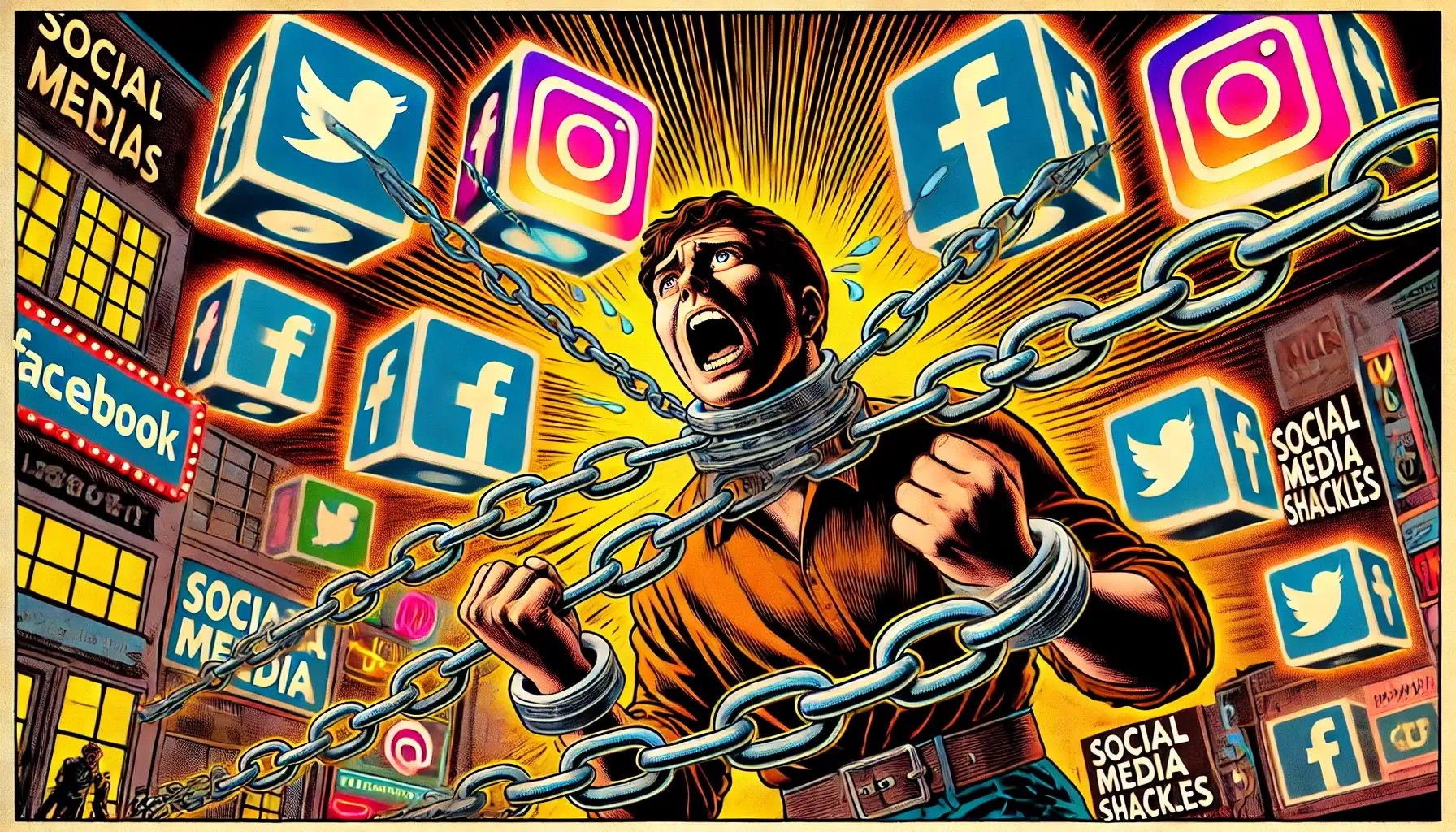Social Media Is Not the Internet – It’s an Economic Prison

The Invisible Contract: How Social Media Owns Your Content
Social media platforms have a largely unnoticed, yet universal clause in their terms of service: the non-exclusive, sub-licensable right to your content. This is not just about enabling the distribution of your posts on their platforms; it means they legally retain a claim over anything you publish there. While rarely exercised outright, this provision creates a structural reality where your best ideas, stories, or insights can be repackaged, repurposed, or suppressed at their discretion.
Your entire likeness, insofar as you publish it on these sites – is not just your own.
If you write something groundbreaking, you might be able to take that thought to a book deal – but if Facebook, Twitter, or any other platform wanted to use it, you’d have no recourse. Or worse, if they just don’t want you to use it, they can make that happen in a variety of ways. And if metadata is generated about you – such as shadow bans, suppression of reach, or de-ranking of your content – you cannot even demand transparency about how and why it happened. If the outside (of that platform) world views the platform’s statistics as universally important, they can prevent you from becoming a public professional in your field.
In effect, you become a digital serf, farming engagement for someone else’s profit.
Why They Won’t Let Me Create a True Competitor
At its core, this reality isn’t just about content – it’s about control over economic opportunity. Social media platforms operate under a financial model where the only way for you to succeed on them is if they allow you to. If your content or persona increases the platform’s value, you are rewarded with reach. If it doesn’t – or worse, if it actively threatens their power – you are suppressed.
This fundamentally means that true competition to platforms like Facebook, Twitter, or Snapchat is structurally impossible on the stock market. Even platforms that claim to be “alternatives” (like Truth Social) are beholden to the same financial forces that dictate engagement value. Venture capital and institutional investors understand this game, which is why they don’t fund real competitors.
The investment industry as a whole has internalized that social media is not an open playing field – it’s a managed one.
Manufactured Villains and Controlled Chaos
The platforms don’t just moderate; they curate narratives. They need conflict to drive engagement, but they also need to ensure that it doesn’t produce a net negative impact on their value.
Take Kanye West’s Twitter meltdown: A man once viewed as a cultural and financial force spirals into an antisemitic tirade, and yet his presence on social media remains largely intact – until he steps into a controversy that might actually affect corporate advertisers. Who benefits from this? Elon Musk, Twitter, and every other financial entity tied to that spectacle.
It is no coincidence that this happened at a time when:
- Musk’s own brand was struggling (Tesla stock down, Dogecoin lawsuits, personal scandals).
- Kanye West’s brand was in decline, meaning he had no leverage with companies like Adidas or Gap anymore.
- Social media needed a new villain to generate headlines.
West was the perfect controlled agent of chaos – somebody who could stir controversy, but in a way that didn’t fundamentally threaten the infrastructure of power. In this game, nobody truly cancels you – they just decide when your existence is more valuable as a pariah than as an asset.
Social Media’s Ultimate Illusion
For years, these platforms have successfully convinced people that they are the internet. That Twitter is the public square. That Facebook is a place to make friends or share memories with your relatives.. That Instagram, TikTok, and Snapchat are necessary for cultural relevance or social influence.
These are all lies. These platforms are not digital public spaces. They are privately controlled, profit-maximizing ecosystems that filter, throttle, and suppress content based on their own interests. Even relationships on these platforms are shaped by this economic logic – connections that don’t generate engagement are discouraged, while divisive, viral, or monetizable interactions are amplified.
The result? Friendships formed on social media are often inherently transactional. If an online connection doesn’t feed the platform’s engagement metrics, it becomes invisible.
This is a cybernetic system that optimizes for maximum profitability while masquerading as a neutral space for human connection.
Opting Out of the Digital Plantation
Understanding this system is the first step in rejecting its power. The idea that “organic content” can lead to independent success is largely an illusion within these platforms’ constraints. True digital independence requires owning your own distribution channels, whether that means building an audience through personal websites, email lists, decentralized networks, or alternative digital ecosystems.
The world has accepted the terms of service without realizing what they actually signed up for: a permanent position as unpaid laborers for an attention economy controlled by a handful of corporate interests.
If we are to create a future where digital spaces are truly free, we must stop treating these platforms as the internet itself and start recognizing them for what they really are – walled gardens that profit from our existence while limiting our autonomy.
